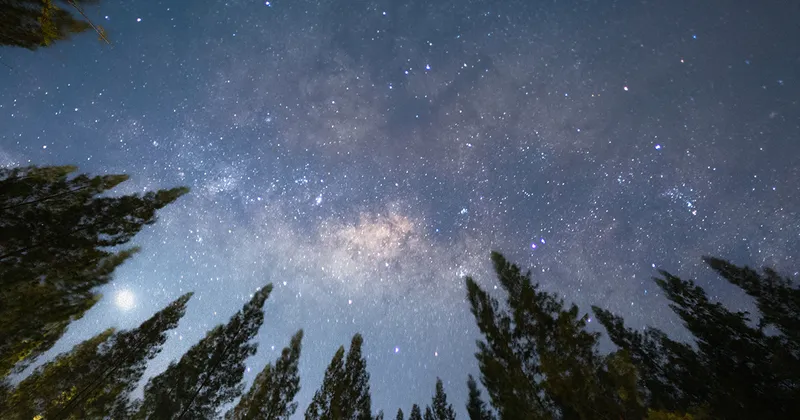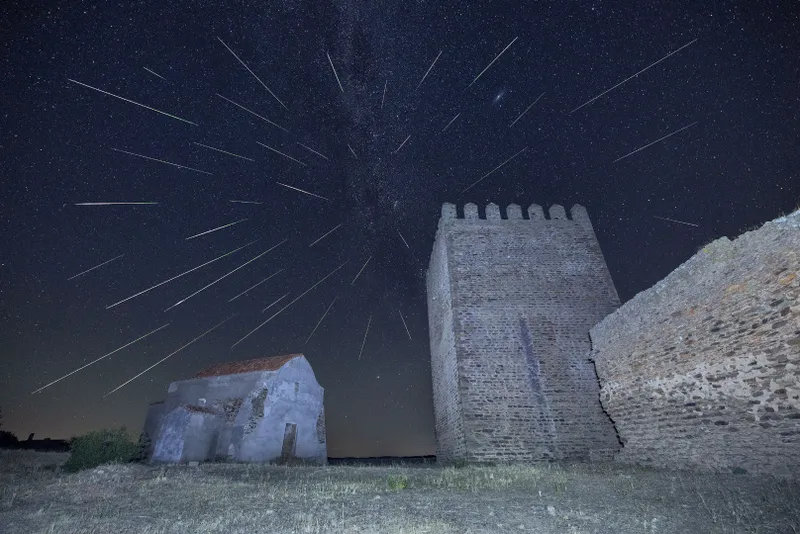First of all, let’s be clear about what a shooting star isn’t – it’s not a star.
Sure, from our vantage point on Earth, it might LOOK like a star that’s become untethered from its natural place in the cosmos and gone randomly shooting off across space: hence the name.
But that’s not what a shooting star actually is.
Stars are enormous blobs of burning gas – and they’re a long, long way away.
The nearest to Earth is of course our own Sun, which lies a little over 150 million kilometres away.
After that you’re looking at Proxima Centauri, which is about 40 trillion kilometres from Earth.

What causes a shooting star
Shooting stars, on the other hand, are meteors: small, solid objects that are typically less than 100km above the surface of Earth.
They occur when a small fragment of rock or dust – a meteoroid – enters Earth’s atmosphere.
Brushing at high speed against gaseous molecules in the atmosphere causes friction that heats the object up to very high temperatures, causing it to glow against the night sky and leave a trail in its wake.
Our meteoroid is now a meteor, or ‘shooting star’.
Should the original object be large enough to survive this process of burning up on entry, any fragment of it that eventually lands on Earth’s surface will be a meteorite.

So that’s that a shooting star is: a small lump of rock burning up on entry into Earth’s atmosphere.
It’s not a star and, at the risk of upsetting any Italian toymakers, nor is it a magical portent that can be used to transform your new wooden puppet into a real boy.
Shooting stars are often considered to be 'good luck', but of course there's no scientific basis to suggest that they cause good fortune.
Nor indeed that something that might be described as 'luck' actually exists at all anyway.
When to see a shooting star

Meteors/shooting stars can occur anywhere in the night sky at any time, but the best time to see one is during one of the annual meteor showers that occur each time the Earth’s orbit takes it through the band of debris left behind by the path of a comet (and sometimes an asteroid).
You can find out more about this in our guide to what causes a meteor shower.
Some of the biggest and most spectacular meteor showers include the Quadrantids in January, the Perseids in August, the Orionids in October, the Leonids in November and Geminids and Perseids in December.
The number of shooting stars you might see per hour is described by the 'zenithal hourly rate', which states how many you're likely to see during a meteor shower under perfect conditions.
During the Perseid meteor shower, for example, the rate might be 25 shooting stars visible from a suburban location per hour.
During other meteor showers you'll see much less.
